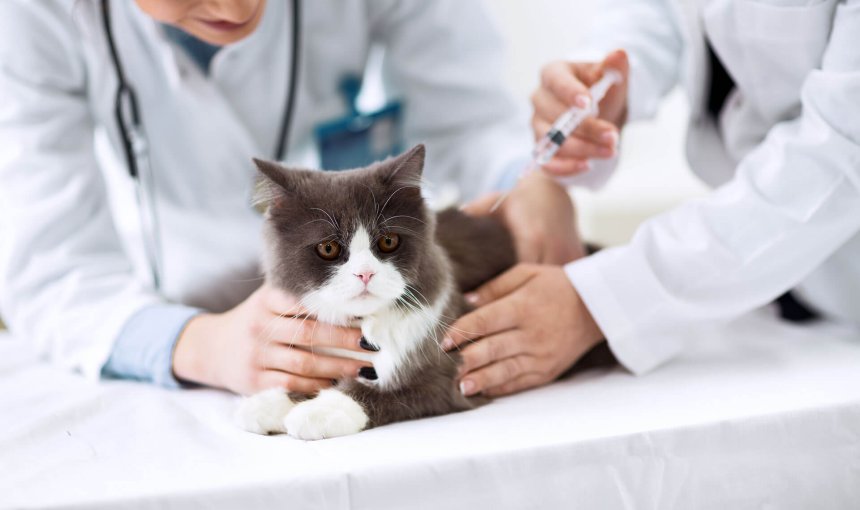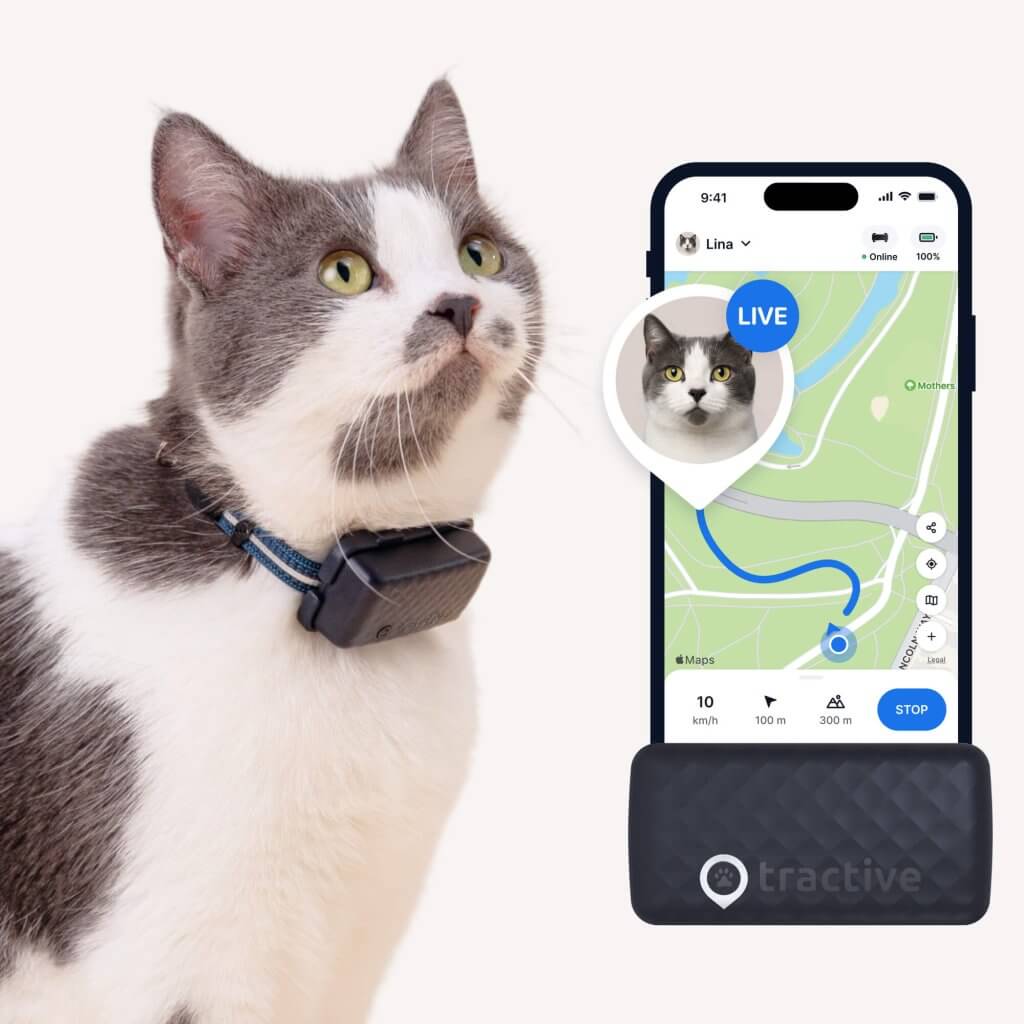Is A Microchip Cat ID Enough To Find Your Lost Cat?
Microchips are a helpful safety precaution - but they're only built to identify your cat, not actually help you track them down. Here's why a microchip + GPS tracker means the ideal combo.

Even the most chill indoor cats may make an escape attempt or two. So if you’ve thought of getting them microchipped as a safety measure, you’re on the right track. But take it from us as experts on finding missing pets: just a microchip might not be enough. Nowadays, you have way more useful tracking options like GPS trackers, which can help you follow your cat’s movements in real-time. So a combination of a microchip cat ID and a dedicated smart cat collar with real-time GPS tracking is the smart choice. Here’s why.
Key Takeaways
A microchip is a permanent form of identification, similar to an ID card. A tiny chip, the size of a grain of rice, is implanted under your cat’s skin. It contains a unique ID number that can be scanned by a vet or animal shelter to retrieve your contact information.
Microchip cat IDs do not provide real-time GPS tracking of your cat’s location. For a microchip to be effective, a lost cat must be found by someone and taken to a facility equipped with a scanner.
For max safety, it’s best to get your cat microchipped and – if you want a pair of eyes on them at every step – use a smart cat collar with real-time GPS tracking. So you can follow their every step in real-time, prevent an escape, and even understand their territory.

Find out where your cat spends their time.
Read moreWhat are microchips for cats?
A microchip for cats is an identification tool. It’s an electronic chip of the size of a grain of rice, implanted under your cat’s skin. Each microchip contains a unique ID number for identifying the owner of the cat, in case they get lost. The chip is injected carefully between the shoulder blades of your cat. (It’s a painless procedure that lasts only a few seconds.)
Once your local vet is able to implant the chip, here’s how it works:
- Your cat goes missing. (Maybe because they’re in heat, sick, or have an intruder on their territory.)
- A helpful stranger finds your cat wherever they’re hiding.
- They take your cat to a vet or a shelter.
- The vet scans your cat’s microchip to identify you.
- They then contact you to inform you they’ve found your lost cat.
Make sure to keep your contact details up to date on the database. Otherwise, your local vet or shelter won’t be able to identify you as the owner of your lost cat.
Can a microchip cat ID track your cat in real-time?
⚠️ No. Microchips can’t help you track your cat in real-time. They can only help someone identify your cat. They don’t help you take an active role in tracking down your missing cat, in case they get lost.
In general, microchips for cats are a more reliable form of identification than collar tags, which can fall off or become illegible. But with a microchip, you rely on a stranger to find, retrieve and bring your lost cat to a vet or shelter, then contact you. Which, when you think about it, is actually no guarantee you’ll be reunited with them. Pet kidnapping is actually on the rise, with over 2 million pets stolen each year in the US alone.1 At least 15% of cat parents lose their cats within 5 years – and some are never found. Your cat might also be more likely to be kidnapped if they’re not spayed or neutered, since they might be sold illegally to a breeder.
One study even found that over half of missing cats actually had some kind of identification (like a microchip or an ID tag.)2 Meaning just a microchip alone doesn’t actually prevent your cat from getting lost. So while a microchip cat ID is a handy device to identify your cat if they go missing somewhere “safe”, it’s always good to combine it with a dedicated cat GPS tracker. Which can help you track down your cat’s movements in real-time – and over an unlimited range.

Track your cat wherever they go
See where they are in real-time, no matter how far they roam. Discover their territory. Get alerted if they go too far. Track activity, sleep, and receive health alerts if your cat’s activity changes. Keep your feline friend healthy and safe.
Should you microchip your cat?
In many countries, cat microchips are regulated and required by law. So make sure to check whether your country (or state) is one of them. If a non-identifiable cat is found lost on the streets, they could even be euthanized.
⚠️ Most countries in the European Union (EU) require a microchip cat ID in case you’re travelling with your cat.3 Besides this, you’re also legally required to microchip your cat if you’re traveling to Australia or the United Kingdom (including England, Scotland, Wales, Northern Ireland, and the Isle of Man.) If you’re relocating with your cat, keep in mind that a microchip is only useful when you keep the contact information for the ID registration up to date. Most cats tend to go missing between 1-7 years (or when they’re considered “adults”). So it’s always a good idea to microchip them for ID purposes once they’re old enough.
Similarly, outdoor cats are at highest risk for pet theft. So consider microchipping them for extra safety. (Along with a GPS tracker to help you track their every move.)
What are the pros of microchips for cats?
A cat microchip or feline ID chip essentially has only one main use. And that is to identify your cat in case they are lost, found and brought into a vet or animal shelter by a third party. For this reason, you need to rely on other people to help you find your lost cat, when you use a microchip only.
Some of the other benefits of using the microchip on your cat might include:
- Proof of identity and ownership, to avoid potential disputes.
- Keep other cats out of your house using a chip-enabled cat flap. You might find this occurring more often if you’re caring for feral and stray cats outdoors in winter.
- Take your cat abroad – microchips are required for the PETS pet passport scheme.
- Ensure a proper diet by using feeding stations which scan microchip details.
Does a cat microchip use GPS?
No; cat microchips don’t use the Global Positioning System (GPS) or any other navigation / localization technology. Because of this, you cannot actively track and locate your lost cat with a microchip.
What are the cons of the microchip cat ID?
While it’s definitely sensible to microchip your cat, this is only minimally helpful. They are of no help while you are actively searching for your cat. You are dependent on other people to use the microchip.
Microchips have no GPS integrated, so you can’t track your cat in real-time. You also won’t be able to locate your cat if your contact information isn’t up to date. Finally, your local shelter might not have a chip reader available. So while helpful to an extent, a microchip cat ID still isn’t enough to actually find your cat. In case of a lost cat, it always makes sense to attach a pet tracking device to their collar to follow their every step.
Why use a GPS tracker for my cat?
Unlike microchips, GPS trackers for cats offer you real-time GPS location information about your cat directly in your smartphone. Here are some of the main benefits of the Tractive GPS Cat Tracker:
- Real-time tracking
With location updates, which works over an unlimited range. So with just a glance at your phone, you can tell if your cat is about to head somewhere dangerous. - Built for comfort
Your Tractive GPS is a small, lightweight device attaching to your cat’s collar or harness. Tractive CAT MINI trackers come with weight-adjustable safety collars to prevent dangling. - Escape alerts
Warning you if your cat has left a “safe zone” that you’ve set up via your mobile app. - A Heat Map/Location History
Of where your cat spends most of their time. So you can retrace your steps and find them quicker and easier during a search. - Mapping out your cat’s territory
Which your tracker does for you as it monitors your cat’s movements on a daily basis. So in an emergency, you know where they’re likely to go hiding first.
Microchip cat implant vs GPS tracker: Which is best for my cat?
So now you know the main features and uses of cat microchips and GPS tracking devices for felines. So which one should you go for? Well, the answer is: both! Here’s a quick distinction between microchip cat IDs and a dedicated cat GPS tracker, like Tractive’s:
| Details | Microchip cat IDs | Tractive Smart Cat Tracker |
|---|---|---|
| Purpose | Identifying your lost cat | Finding your lost cat |
| Size | 12 x 2 mm | 55 × 28 × 17 mm |
| Weight | 0,025 g | 25 g |
| Implantable | ||
| Waterproof | ||
| Battery life | No battery required | Up to 5 days |
| Upfront cost | ~85 € | 49 € |
| Ongoing costs | None | Monthly subscription plans |
| Location tracking | ||
| Are you going to have to rely on strangers? | Yes | No |
| Real-time location updates | ||
| Legal requirement | Required in most countries | No |
| Area of operation | Worldwide | Worldwide |
| Escape alerts | ||
| Activity Tracking | ||
| Sleep Tracking | ||
| Health Alerts | ||
| Light & Sound tracking |
⚠️ Remember: Having your cat microchipped might be a mandatory regulation in your country, but unfortunately, this won’t be enough in case kitty runs away. But along with a microchip, having a GPS cat tracking collar attached to your feline’s neck will definitely help you to find your cat, in case they get lost.



